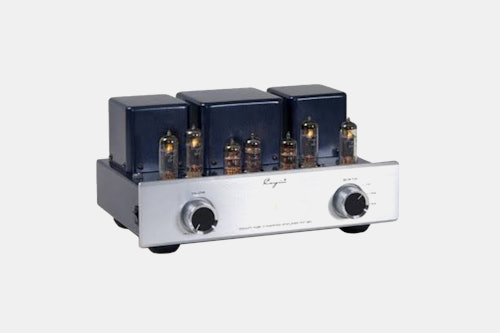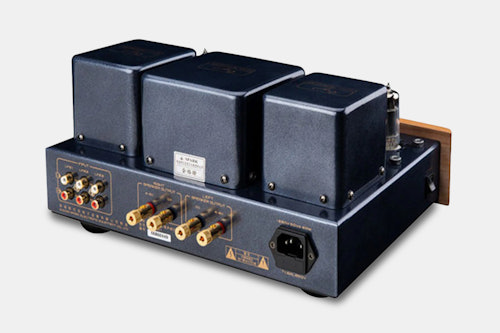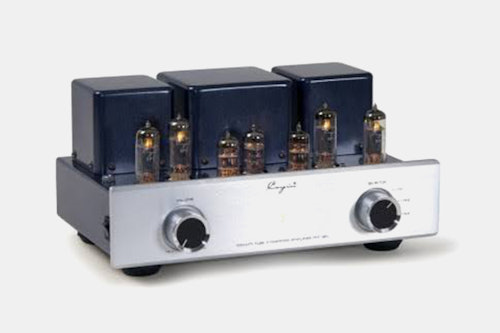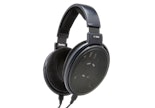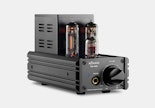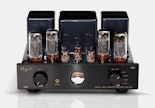Click to view our Accessibility Statement or contact us with accessibility-related questions$853$853











Cayin MT-12N EL84EH Integrated Amplifier
$479
Cayin MT-12N EL84EH Integrated Amplifier
bookmark_border
$479
Ready to Ship
●
Members who purchase earn
479
Drop Rewards
Frequently bought together:

search
close
Sort by: Newest
keyboard_arrow_downrpeebles
1
Aug 19, 2024
Hello ! Could somebody kindly advice me whether this amp will be able to nicely drive MAGNEPAN Mini-Maggie and MAGNEPAN !.7i - Both 4 Amp Speakers. Thanks & Regards

KimbaWLion
146
Keyboard Club Member
Jun 3, 2024
I would rather try one of the Cayin KT-88 Amps, read a lot of good things about those!
lrjshabaz
36
Nov 26, 2023
My amp has an extraordinary amount of gain, volume control scarcely usable across many sources. Am I on an island?
rockdc
0
Jul 8, 2023
The amp I got is not "Front panel material: Real wood and chrome" as described in ad. And, it's printed circuit boards; not point to point wired like the other Cayin amps I've seen. It doesn't sound great to my ears....I'm very dissapointed. How do I return it?
(Edited)
Umlaut
12
Feb 20, 2023
Will this work with Q Audio 3020i for near field desktop system? They are 88 db sensitivity. Using Topping D50 DAC and Roon.
Will it accept a line level output from my DAC without a preamp? Looks like it should...
Also does anyone know the width distance between the feet? Trying to confirm it fits. My surface is a bit less than 12”. A bit of overhang is ok.
Finally is there a warranty ?
(Edited)

marcel54
17
Jan 14, 2023
Again Drop is only for the US. When wil it finally come for "us". This is the third time it is sold at 110 volt. A large part of the world is not at 110 voltage.

Jefffeith
29
Oct 6, 2022
Kyo9999This amp sounds very powerful with my Klipsch Heresy IVs. Effortless actually and more powerful and dynamic than my 75 watt Marantz. I’d imagine at 92.5db the Focals would sing.

rumata13
563
Aug 4, 2022
Couple questions:
1) all search results show photos of this amp with wood panel with metal insert, while Drop offers one in all aluminum. Which one are we going to get?
2) what are typical use cases for this amp? With only 9W/ch it does not look powerful. What kind of speakers should be paired with this amp?
Mike333
5
Feb 17, 2024
Vintage Sansui 4000 here, I did not think I needed this amp either, glad I bought it. I am using Zu DW6 Supreme speakers, very happy and would recommend this amp to friends and family. ;-)

Fayne
2603
Aug 3, 2022
El_NagualMaybe, assuming you've got an adapter with a resistor network designed for push-pull. If you bridge the ground/negative of the left and right channels without the proper protection, you'll likely release some high voltage magic smoke.
If you're looking for a push-pull tube amp to drive those planar cans, I'd suggest instead looking at something like the Muzishare i3 which comes with both single-ended and balanced headphone jacks on the front along with 8Ω terminals on the back. That unit uses 6N2 and 6P1 tubes to push ~12 watts instead of the 6N1, 12AX7, and 6P14 that the Cayin does for ~9-10 watts. The balanced out is a bit too powerful for most sensitive low Ω dynamic cans, but does extremely nice things for planar which are current dependent more than voltage.
If you're into tube rolling the i3 is a bit more limited than the MT-12N, but you're at least able to roll to something like the great sounding Voskhod 6N2P-EV and Svetlana 6P1P-EV tubes (shown in picture below). 6P1 tubes are electrically equivalent to 6V6 and 6AQ5, just 9-pin noval and dang sweet sounding. 6N2 are very similar to 12AX7, just 6 volt instead of 12.
Pardon the dust in the photo, I'd take a new one, but this amp recently lost it's spot on my desk to a Schiit Folkvangr:
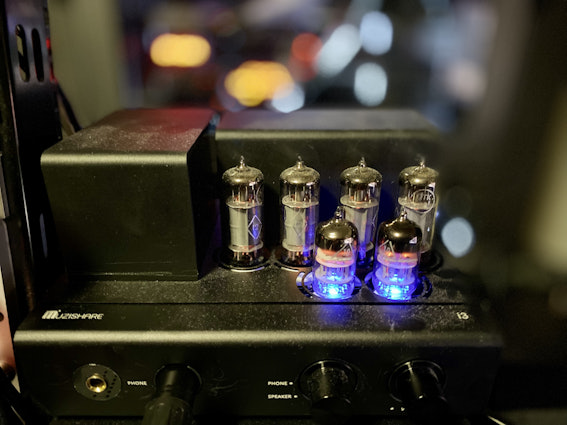

(Edited)

marcel54
17
Aug 3, 2022
have been waiting a long time for this after the previous shipment of 110 volt. When by chance will the 220 volt be shipped. The world is bigger than the USA although some may disagree with this statement. ;)
Showing 20 of 47
Recent Activity
